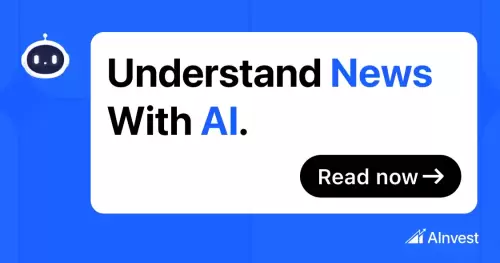 |
|
 |
|
 |
|
 |
|
 |
|
 |
|
 |
|
 |
|
 |
|
 |
|
 |
|
 |
|
 |
|
 |
|
 |
|
Cryptocurrency News Articles
Why Is the Crypto Market Down Even When Bitcoin Is Bullish?
May 19, 2025 at 05:16 pm
When Bitcoin shows a bullish trend—meaning its price is rising—many people expect the entire crypto market to follow suit.

It's a common observation that even when Bitcoin shows a bullish trend, the broader crypto market might still be declining.
When people invest in Bitcoin and its price increases, it usually pulls liquidity and capital away from other crypto assets, leading to a decrease in the price of those assets.
1. Bitcoin Dominance Is Rising
As Bitcoin's price surges, investor focus naturally shifts entirely to BTC, especially during periods of high volatility or risk-off sentiment. This, in turn, increases the Bitcoin Dominance index, which measures BTC's share of the total crypto market cap.
However, as dominance rises, liquidity and capital flow out of altcoins, rolling over into BTC to capitalize on its upward trend. This liquidity shift puts selling pressure on altcoins, decreasing their prices.
2. Profit-Taking From Altcoins to Buy More Bitcoin
During BTC rallies, many investors might sell their altcoin holdings to buy more Bitcoin and capitalize further on the promising upward trend. This contributes to selling pressure on altcoins as traders attempt to take profits from their previous investments and deploy those funds into the asset class they believe will continue performing best.
3. Market Caution and Stability
During periods of high volatility, both big players (whales) and institutions prefer stability and less risk. When Bitcoin moves sharply—either up or down—they may move funds out of altcoins and into BTC for stability and less risk. This risk-averse behavior, driven by macroeconomic uncertainty or fear, hurts altcoins performance.
4. News-Driven Volatility Creates Uneven Reactions
Sometimes, a bullish move in BTC is driven by specific news that does not impact altcoins. For instance, if ETF approvals, macroeconomic signals, or institutional interest drives Bitcoin up, then the market reaction might be uneven.
5. Altcoins Typically Begin To Rally After Bitcoin Stabilizes or Reaches a Local Peak
If BTC is in the middle of a breakout or early bull phase, altcoins may lag behind and only pick up momentum in the later stages. As Bitcoin stabilizes and the initial breakout plays out, usually around a local peak or Fibonacci level, altcoins begin to follow suit. This is because the liquidity that drove Bitcoin's move usually flows into altcoins next.
Disclaimer:info@kdj.com
The information provided is not trading advice. kdj.com does not assume any responsibility for any investments made based on the information provided in this article. Cryptocurrencies are highly volatile and it is highly recommended that you invest with caution after thorough research!
If you believe that the content used on this website infringes your copyright, please contact us immediately (info@kdj.com) and we will delete it promptly.






























































